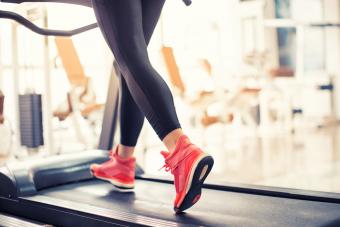
A yoga bolster is a large, often rectangular pillow used in a variety of formats for support, comfort, and relaxation. It's easy to incorporate a yoga bolster into your daily routine. With strategic placement, it can enhance and deepen your practice by making yoga poses more accessible.
Rest
Your yoga bolster is a great addition to a mild yin or restorative yoga practice. It is often used as a form of support for poses that address restlessness at night, as well as poses that help you sleep.
- Supported twist

- Reclining bound angle
- Feet up the wall
- Supported half frog
- Restorative side fetal
- Supported child's pose
- Corpse pose
Rest on top of the bolster in any of these poses. You can use it on its own or stack yoga bricks underneath for a more comfortable experience. The idea is to allow yourself to relax fully.
Support Deep Stretches
Some yoga poses can be intense for those who lack flexibility in the areas being stretched. The hamstrings as well as the hips often prevent yogis from dropping fully into many poses. Placing a bolster in the right spot can help ease you into the pose so that you stay in it longer and without pain.
- Seated forward bend: Lay your torso on the bolster.
- Fish pose: Place it under your mid-spine to support your back.
- Pigeon pose: Place the bolster underneath the hip of your front leg, the one that is bent.
Cushion Your Inversion Practice
Some inversions require the top of your head or other sensitive areas to come in contact with the floor. For beginners, too much pressure can be painful and may even leave bruises. Placing a bolster in the right area can help relieve the pressure in several poses.

- Headstand - under your head
- Shoulder stand - under your shoulders
- Plow - under your shoulders, or under your back in the modified version
- Bridge - under your hips
There's no need to suffer while practicing inversions. Don't be afraid ask your yoga studio if they can provide you with a bolster, even in classes that don't typically provide one. If they don't have any, bring your own.
Sit
Many people spend their entire day sitting in a chair, which not only shortens the muscles of their hip flexors and hamstrings, but can also lead to weak lower back and glute muscles. If you have flexibility at the office, work from home, or simply have a habit of hitting the couch at night, try spending some time on your bolster instead. You can sit a few different ways.

- Sit with your legs crossed and feet in front of the bolster. This helps you sit taller and more comfortably.
- Sit with your shins underneath you. This is best if you have tight hips, back tension, or sensitive knees. If one bolster is too low, place a few yoga blocks underneath to raise it up or stack two bolsters on top of one another.
For those who meditate, yoga bolsters are also often used interchangeably with a zafu, a cushion made for sitting meditation. It makes the experience more comfortable for practitioners who sit anywhere from five minutes to several hours at a time.
Use as A Traveling Desk
Finally, your yoga bolster can serve as an impromptu surface for you to lay down your laptop or rest your notebook for work or journaling. Yoga teacher certification trainings, which are usually taught in the studio setting, often use bolsters instead of desks to write on and to use as a prop for back support against a wall. Because it is made of dense material, the bolster will provide great support and won't sink in the center when you place it on your lap. You can also place it in front of you for a combination of work and yoga practice.

Add a Bolster to Your Practice
Your yoga bolster can be a helpful companion to your regular yoga practice. It can allow you to dive into poses for a deep stretch, provide cushioning for sensitive areas during challenging poses, and aid in relaxation. Most yoga studios have them available when you come in to practice. You may also consider buying your own from such stores as Yoga Outlet online.







